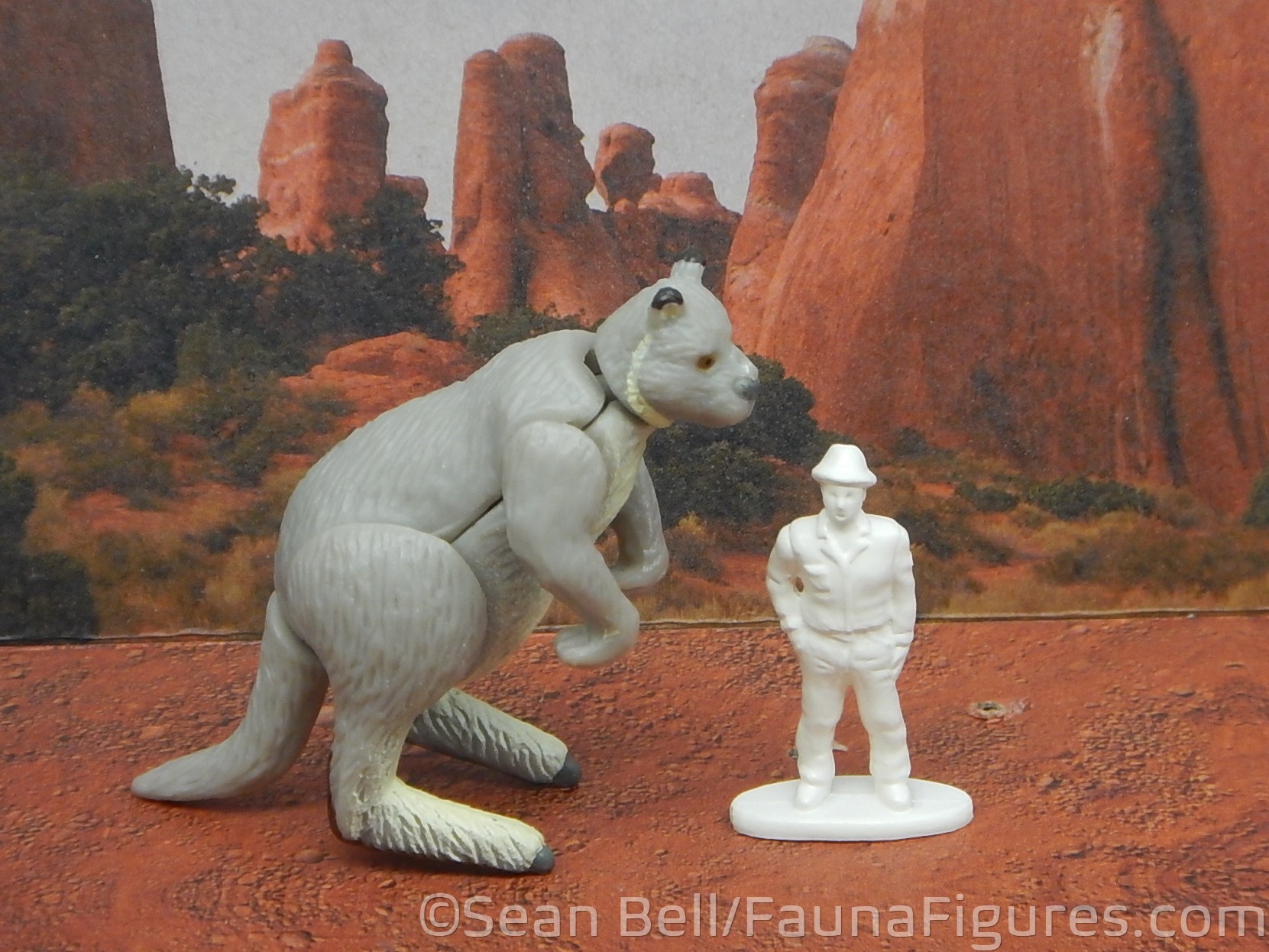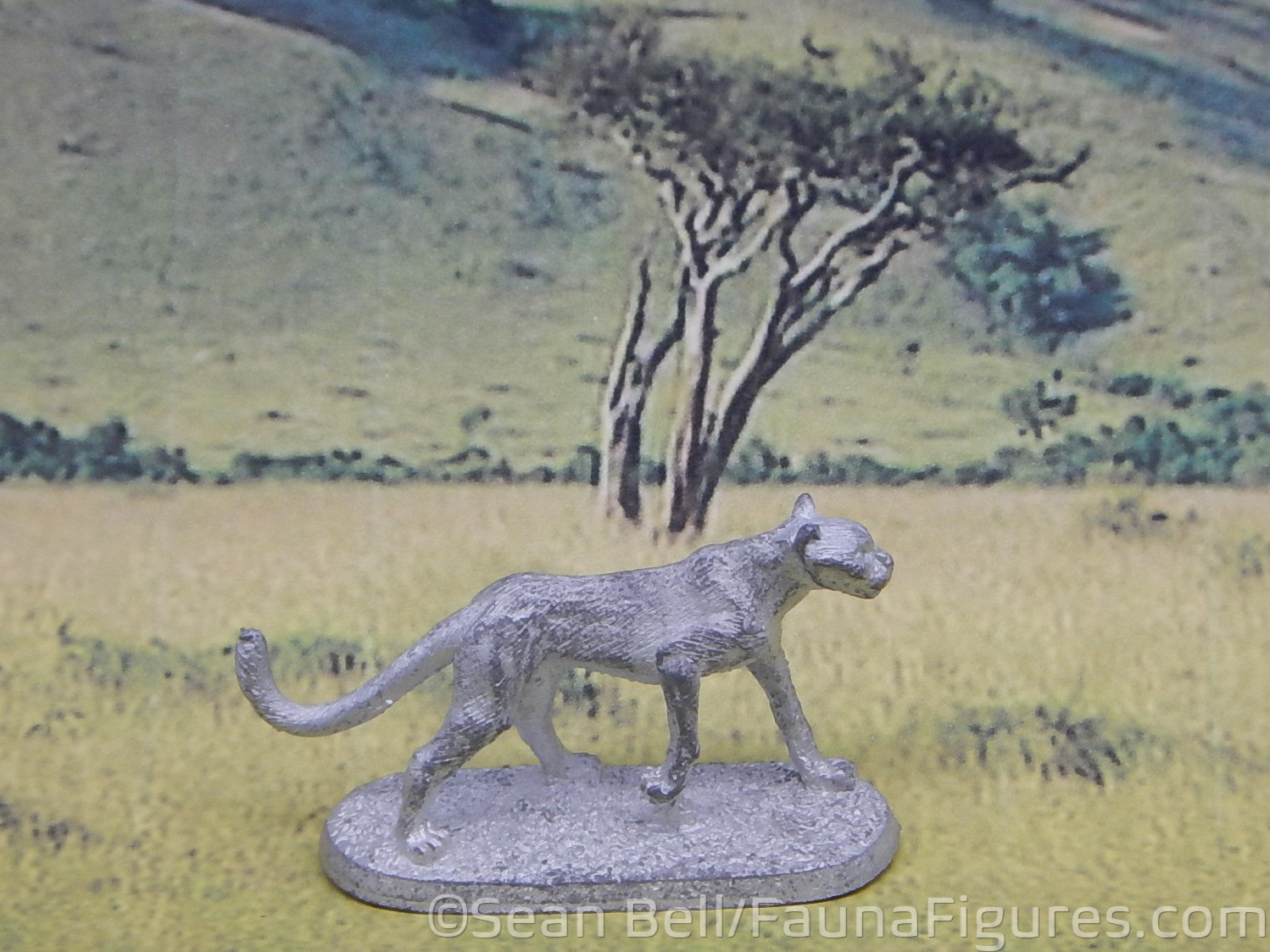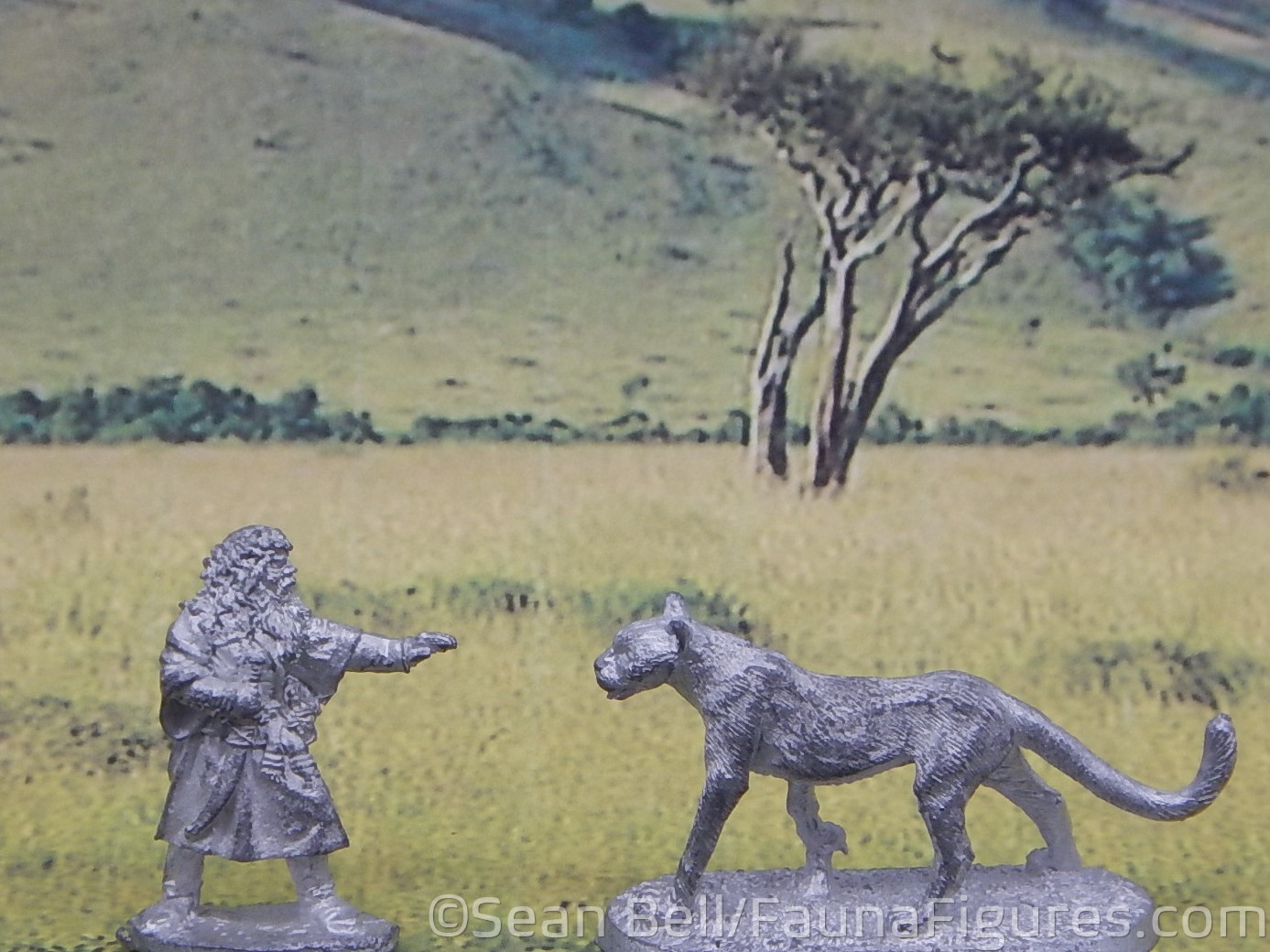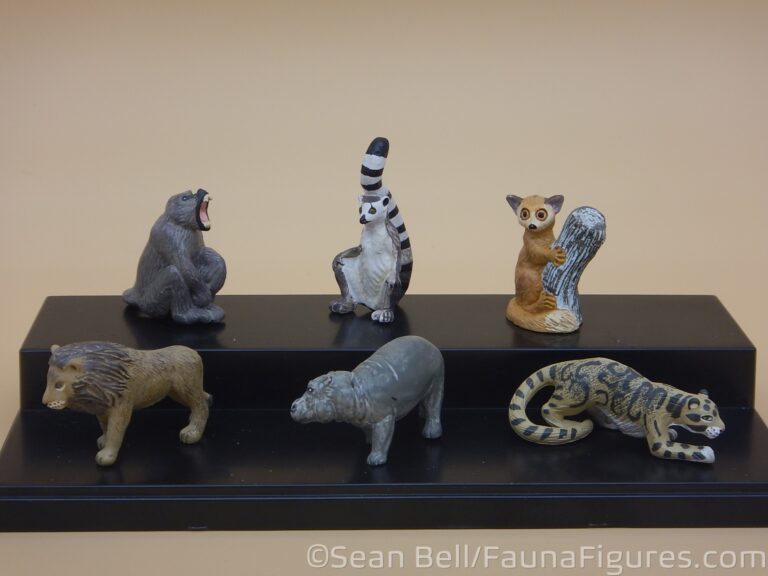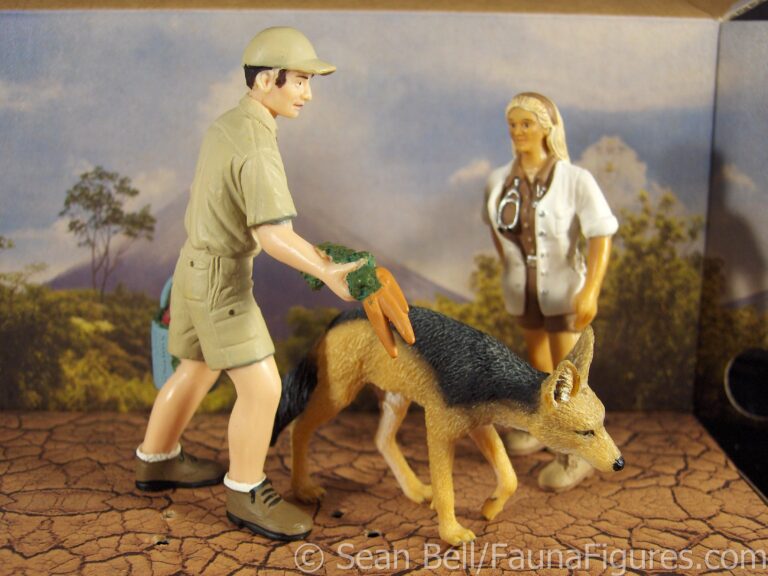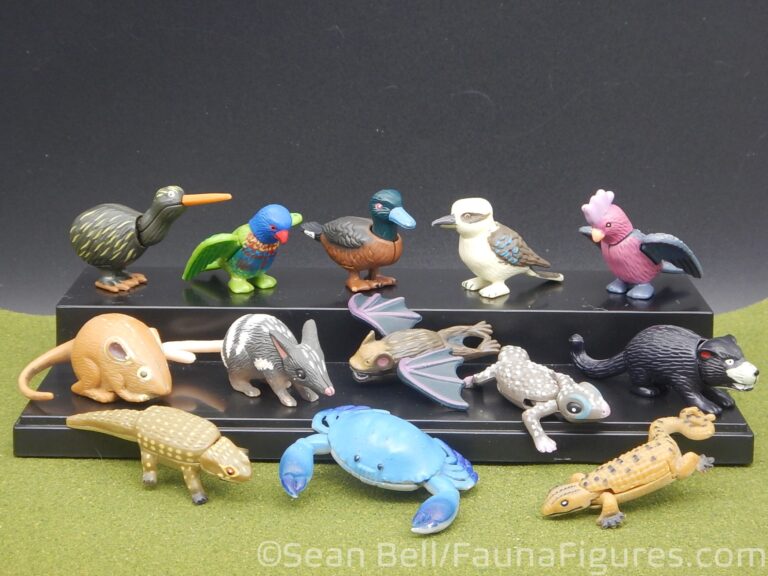A new ToyTrion featuring three small figures of notable very large animals, all mammals this time! All extinct, and all with presence in the Pleistocene…Let’s see what we have.
Yowies Lost Kingdom Giant Short-faced Kangaroo
This first figure is an example of why the original Yowies Australia figures were so great. For the first two series, especially Lost Kingdoms A, they tried to stick to Australian fossil species. There aren’t a lot of dinosaurs/Mesozoic reptiles from there (it was even less when they were released) so it meant a very wide range of animal types and geologic ages. That meant a few less known, but very strange mammals. And one of them is this model, number 44 in the series, Procoptodon goliah, the giant short-faced kangaroo. With a few exceptions, extinct Australian mammals don’t get made very often, so even if it’s a small figure, it’s great to see this giant marsupial in a toy form.
Like most Yowies of the era, the figure is a good if not perfect representation of it’s source. The seams are especially visible, and there is a bit of awkwardness in how the legs and tail rest. There is also the issue that giant kangaroos like this might not have been hoppers at all, like their modern counterparts, but more of a bipedal walker. Mainly due to physiological limits of their enormous size. But, of course, when you make a giant kangaroo, it has to look like a giant kangaroo! Plus, they got the short face on there, just to be certain! As a unique mammal figure, this Yowie is certainy worth trying to find; it isn’t like there are many options right now anyway!
Ral Partha DnD Beastmasters Giant Cheetah
Keeping with the theme of giant versions of familiar modern mammals, we have another Beastmasters figure from Ral Partha, this time the giant Pleistocene cheetah Acinonyx pardinensis. Proportion-wise, the figure looks pretty much like a modern cheetah honestly–one might expect the figure to look a little more bulky than the modern species, for example. But it is something to at least have been name-checked by a company when making a figure, and even as a role-playing companion, it is unique to see an animal that isn’t strictly about brute strength (although, still, giant cheetah!).
Overall, the figure is a decent model, once again. There is some awkwardness in the front right foot…it looks a little too overbent backwards. Being a soft metal, I suppose I could cut and adjust, but I’m not going to. These figures are not available anymore, and I’m not about to start messing with it–broken would be worse than awkward! It’s probably why I will likely never actually paint them. At least not until I have taken the time to practice on others…I kind of like have a metal mammal menagerie (a band name that is free for the taking BTW) on my shelves. As with the rest of the Beastmasters figures, it is worth trying to find, especially if you have an appropriately scaled display.
Mech Woolly Mammoth
Finally, we have another extinct giant of the Pleistocene, with a familiar modern relative. This one, though, is going to be very familiar to anyone with even passing knowledge of fossil animals–it is of course a Woolly Mammoth Mammuthus primigenius. As an animal, there can’t be much to say; along with sabre tooth (sigh) tigers, there are probably no prehistoric mammals depicted more often in any kind of media. The figure itself is also pretty widespread–I found mine, as did many people I know, in the 90s as part of a blind bag series of stickers and figures, meant to correspond to a sticker book. I ended up with a lot of doubles…of 23 out of 24 of the figures. Including the mammoth. Nowadays, they are available in a set from Playspaces, with a few extra models (and, I think, a few dropped species as well). But the mammoth remains.
Unlike a previously discussed Mech figure, the sabre-tooth, the sculpt on this figure is much more clearly representative of its labelled species. It even has the flattened head (maybe a bit exaggerated) to indicate the species. The tusks are a bit small, and lack the outward curve, but these were probably never meant to be museum-quality reproductions! And it’s still better than many of their dinosaurs. As a toy, it would be great for play, or for dioramas, etc. But someone looking for a more exact replica would probably be able to find just a few (!) other woolly mammoth models to suit their needs, regardless of size or quality.



